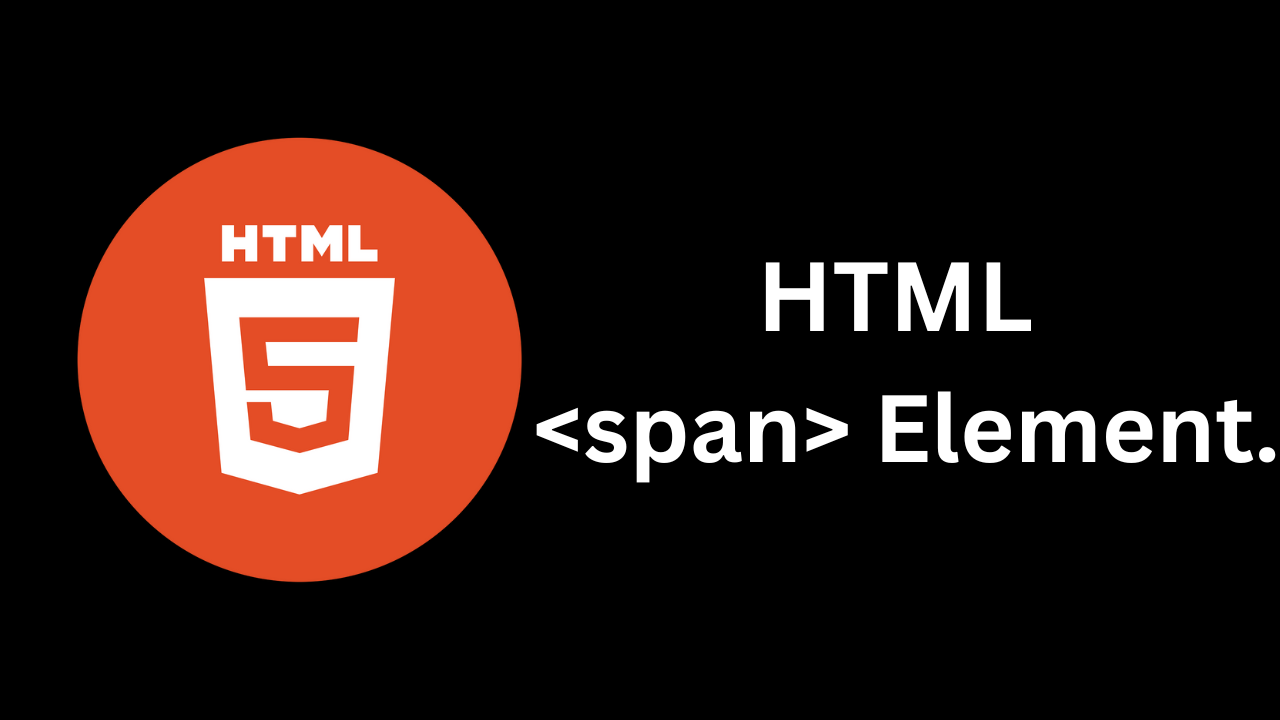Understanding the HTML <span> Element
 Shivani Patel
Shivani Patel
The HTML <span> element is a versatile inline container that is widely used in web development for styling and grouping text or other inline elements. Unlike the <div> element, which is a block-level container, the <span> element allows developers to apply styles without disrupting the flow of text. In this blog post, we will explore the purpose of the <span> element, its characteristics, usage, and best practices.
What is the <span> Element?
The <span> element is a generic inline container for text or other inline elements. It does not inherently have any visual representation, meaning it does not add any spacing or breaks in the layout. Instead, it serves as a hook for CSS styling and JavaScript manipulation.
Characteristics of the <span> Element
Inline Element: Unlike block-level elements,
<span>does not start on a new line and only takes up as much width as necessary.No Default Styles: The
<span>element has no default styling, making it a clean slate for developers to customize.Flexibility: It can contain text, images, or other inline elements, making it useful for a variety of scenarios.
Common Use Cases for the <span> Element
The <span> element can be used in various contexts, including:
Text Styling: Apply specific styles (like color, font size, or background) to parts of text without affecting the entire block.
Highlighting Text: Use
<span>to emphasize keywords or phrases within a paragraph.JavaScript Manipulation: Select and manipulate parts of the content dynamically, such as changing colors on user interaction.
Example of Basic <span> Usage
<p>This is an example of a <span class="highlight">highlighted</span> word in a sentence.</p>
In this example, the word "highlighted" is wrapped in a <span>, allowing us to apply specific styles to it.
Styling the <span> Element with CSS
The true power of the <span> element comes from its ability to be styled with CSS. You can control its appearance, such as color, font style, and background.
Example of CSS Styling
<style>
.highlight {
background-color: yellow;
font-weight: bold;
}
</style>
<p>This is an example of a <span class="highlight">highlighted</span> word in a sentence.</p>
In this example, the .highlight class gives the span a yellow background and makes the text bold.
Nesting <span> Elements
You can also nest <span> elements within each other to apply multiple styles or effects to the same text.
Example of Nested <span> Elements
<p>This is a <span class="highlight"><span class="italic">nested</span> example</span> of using spans.</p>
Here, the word "nested" is both highlighted and italicized, showcasing the flexibility of <span> elements.
Best Practices for Using the <span> Element
Use Sparingly: While
<span>is useful, overusing it can lead to cluttered markup. Use it only when necessary for styling or scripting.Meaningful Class Names: When applying classes to spans, use descriptive names to make your CSS more maintainable and your HTML easier to understand.
Avoid Semantic Overload: Don’t use
<span>where a semantic element would be more appropriate (e.g., use<strong>for strong emphasis or<em>for emphasis).Accessibility Considerations: Ensure that any important text styled with
<span>is still readable and accessible. Consider using ARIA attributes if needed for dynamic content.Combine with Other Elements: You can use
<span>in combination with other inline elements for complex styling and layout, such as with<a>links or<strong>tags.
Conclusion
The HTML <span> element is a powerful inline tool that provides flexibility in styling and organizing content. By using <span> effectively, you can enhance the visual appeal of your text and create dynamic interactions with JavaScript. While versatile, it's essential to use it judiciously alongside semantic elements to maintain accessibility and clarity. Mastering the <span> element will empower you to create visually engaging and well-structured web pages. Happy coding!
Subscribe to my newsletter
Read articles from Shivani Patel directly inside your inbox. Subscribe to the newsletter, and don't miss out.
Written by
